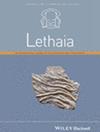A Lower Cretaceous Lagerstätte from France: a taphonomic overview of the Angeac‐Charente vertebrate assemblage
IF 1.9
4区 地球科学
Q1 PALEONTOLOGY
引用次数: 7
Abstract
Terrestrial ecosystems from the Lower Cretaceous of Europe and bonebeds formed in swampy environments are poorly known. The Berriasian‐early Valanginian Angeac‐Charente site in France represents an example of both. Nine field campaigns have yielded thousands of fossils of over a hundred taxa, including 16 taxa from vertebrate macroremains with numerous trample and crocodile bite marks; 22 taxa from the abundant vertebrate microremains; >10 vertebrate coprolite morphotypes with plant and vertebrate inclusions; abundant sauropod and stegosaur tracks including some preserved in ‘4‐D’; termite coprolites; mollusc moulds; ostracods and plants, including coniferous wood, cones, leaves and cuticle fragments, charophytes and pollen. The richness, diversity and preservation of the fossils qualify the site as a fossil‐Lagerstatte. The site represents a ‘snapshot’ into a Lower Cretaceous ecosystem. This is supported by REE analyses of biogenic apatite and sediment samples, the fossils being found in a single stratigraphical interval and the record of sedimentological and taphonomic ‘frozen scenes’. The Angeac‐Charente bonebed is highly diverse, dominated by an ornithomimosaur taxon, and contains both macro‐ and microfossils. This indicates a complex formation, likely primarily influenced by ecological and biologic processes, but also significant physical processes. These include crocodyliform predation and/or scavenging on turtles, ornithomimosaurs and fishes; probable mass mortality occurrence of an ornithomimosaur herd; possible social behaviour of stegosaurs; limited hydraulic transport of most sauropod bones and intense dinoturbation.法国下白垩纪Lagerstätte:安吉亚克-夏伦特脊椎动物组合的地层学概述
欧洲下白垩纪的陆地生态系统和在沼泽环境中形成的骨床鲜为人知。在法国的贝里亚-早期瓦兰吉尼亚安吉亚克-夏朗特遗址代表了两者的一个例子。9次实地考察已经收获了上百个分类群的数千块化石,其中16个分类群来自脊椎动物的大型遗骸,上面有大量的踩踏和鳄鱼咬痕;来自丰富的脊椎动物微遗骸的22个分类群;>10种脊椎动物粪化石形态,包含植物和脊椎动物包裹体;丰富的蜥脚类和剑龙化石,包括一些“4 - D”化石;白蚁粪化石;软体动物模具;介形类和植物,包括针叶类木材、球果、叶片和角质层碎片、叶类和花粉。化石的丰富性、多样性和保存使该遗址有资格成为化石宝库。该遗址代表了下白垩纪生态系统的“快照”。生物成因磷灰石和沉积物样本的稀土元素分析、在单一地层间隔中发现的化石以及沉积学和地貌学“冰冻场景”的记录支持了这一观点。angelac - Charente骨床高度多样化,以鸟齿龙类群为主,包含宏观和微观化石。这表明一个复杂的形成,可能主要受生态和生物过程的影响,但也有重要的物理过程。其中包括鳄鱼形捕食和/或以海龟、鸟齿龙和鱼类为食;鸟齿龙群可能发生的大规模死亡;剑龙可能的社会行为;大多数蜥脚类动物骨骼的有限水力运输和强烈的恐龙扰动。
本文章由计算机程序翻译,如有差异,请以英文原文为准。
求助全文
约1分钟内获得全文
求助全文
来源期刊

Lethaia
地学-古生物学
CiteScore
3.30
自引率
0.00%
发文量
27
审稿时长
6-12 weeks
期刊介绍:
A formal publication outlet for the International Palaeontological Association (IPA) and the International Commission on Stratigraphy (ICS), Lethaia publishes articles of international interest in the fields of palaeontology and stratigraphy. The articles concentrate on the development of new ideas and methods and descriptions of new features of wide significance rather than routine descriptions.
Palaeobiology and ecostratigraphy are the core topics of the journal. In addition to articles, Lethaia contains shorter contributions in the form of discussions, presentations of current scientific activities, reviews and editorials.
Lethaia was launched in 1968 as a joint venture between scientists in Denmark, Norway, and Sweden, with the aim of promoting the development of modern methods in scientific publishing and of providing a medium for rapid publication of well-prepared manuscripts of wide international interest.
 求助内容:
求助内容: 应助结果提醒方式:
应助结果提醒方式:


